
The Photographers Guide
- to-
A Contract toCreate a Video for Transmission, Sales, or Rentals
Tad Crawford
Copyright 1991, 1997, 2002, 2007, 2010, 2012 by Tad Crawford
All rights reserved. Copyright under Berne Copyright Convention, Universal Copyright Convention, and Pan American Copyright Convention. No part of this book may be reproduced, stored in a retrieval system, or transmitted in any form, or by any means, electronic, mechanical, photocopying, recording or otherwise, without the express written consent of the publisher, except in the case of brief excerpts in critical reviews or articles. All inquiries should be addressed to Allworth Press, 307 West 36th Street, 11th Floor, New York, NY 10018.
Allworth Press books may be purchased in bulk at special discounts for sales promotion, corporate gifts, fund-raising, or educational purposes. Special editions can also be created to specifications. For details, contact the Special Sales Department, Allworth Press, 307 West 36th Street, 11th Floor, New York, NY 10018 or .
Published by Allworth Press, an imprint of Skyhorse Publishing, Inc. 307 West 36th Street, 11th Floor, New York, NY 10018.
Allworth Press is a registered trademark of Skyhorse Publishing, Inc., a Delaware corporation. www.allworth.com
eISBN: 978-1-62153-056-5
Text is originally from Business and Legal Forms for Photographers by Tad Crawford
Cover design by Derek Bacchus
Interior page design by Douglas Design Associates, New York
Library of Congress Cataloging-in-Publication Data: Business and legal forms for photographers.4th ed. p. cm.
ISBN 978-1-58115-669-0
1. PhotographyLaw and legislationUnited StatesForms.
2. CopyrightPhotographsUnited StatesForms. 3. Artists contracts United StatesForms.
KF2042.P45C73 2010
343.73'07877dc22 2009033004
This book is designed to provide accurate and authoritative information with respect to the subject matter covered. It is sold with the understanding that the publisher is not engaged in rendering legal or other professional services. If legal advice or other expert assistance is required, the services of a competent attorney or professional person should be sought. While every attempt is made to provide accurate information, the author or publisher cannot be held accountable for errors or omissions.
Contract to Create a Video for Transmission, Sales, or Rentals
V ideo has opened new markets and new means of promotion for both commercial and fine art photographers. While Form 15 is designed for a client who wants a copy of a videotape for personal use, Form 16 is aimed at the photographer (videographer) who seeks wider distribution through a distributor.
Video lends itself to multiple markets. It can be transmitted into a variety of distribution channels, which include the major networks, commercial television stations, educational television, the numerous other channels which are either free or, in some cases, paid for by the viewer, and over the Internet. DVDs or copies on other video storage media can be sold or rented. Each of these arrangements requires different safeguards.
For many photographers, the most likely transmission of video will not be through the major networks, but rather by the many channels which are in competition for programs and have more limited budgets. Channels with subscribers may reach millions of households. One source of information about access to these markets is weekly trade journal Multichannel News (www.multichannel.com).
Some channels buy exclusively from agents and others dont pay for programs, but the possibility to reach large audiences certainly does exist. Even if a channel doesnt pay for a program, the free publicity may be of great value. It can create new clients, bring people to an exhibition, help sell videos or books by the photographer, or create students for a workshop.
The sale of videos offers another potential source of income. If the video is an artwork, perhaps the number produced will be limited to create extra value in each unit. If the video is instructional, the photographer may use social media, direct mail, advertising, or lectures to reach the audience interested in purchasing the video. In any case, the sale of a video offers the opportunity to sell many units at a relatively low price rather than to receive a single payment for an artwork or workshop. Likewise, the rental of videos, which is so common for movies and other entertainment, offers a recurring income flow without requiring new creative efforts on the part of the photographer.
Because video production can be expensive, Form 16 contemplates a commission in which the expenses of creating the work would be paid for. If this isnt the case, the contract can be modified to show that the photographer will create the work at his or her own expense or that the photographer has already created the work. Also, it is quite likely that one distributor will not handle all the possible ways in which a video can be exploited. For example, if a cable station commissions a work, it is unlikely that they will sell or rent DVDs. As always when granting rights, the photographer should give the other party only those rights that party can successfully exploit. The photographer should reserve all other rights.
If the distributor will only transmit the work, only sell units, or only rent units, the contract should be modified accordingly by striking the provisions which dont apply.
Filling in the Form
In the Preamble, fill in the date and the names and addresses of the parties. In Paragraph 1 indicate the title of the work and what production facilities will be made available to the photographer by the distributor. Also show the length and subject of the work. In Paragraph 2 specify the amount of the fee and, also, which expenses will be reimbursed to the photographer. In Paragraph 4 indicate whether the grant of rights is exclusive, the name of the station or Web site, how many releases can be made of the video over which period of time and on which station, or how a release will be defined for Web site usage. Specify how many showings of the work, such as two or three, are included in the one week release period. In Paragraph 6 state the value of the video master for insurance purposes. In Paragraph 7 for sale of video products, indicate whether the distributors rights are exclusive or nonexclusive, specify the area and time period, and give the retail price and royalty payable to the photographer. In Paragraph 8 fill in the same information for rentals as for sales. In Paragraph 14 fill in where arbitration will take place and in Paragraph 15 fill in which state's laws will govern the contract. At the end of the contract have both parties sign, giving the name and title of the authorized signatory for the distributor.
Negotiation Checklist
 Specify the facilities to be provided by the distributor, including details as to time of use, equipment, space, and staffing. (Paragraph 1)
Specify the facilities to be provided by the distributor, including details as to time of use, equipment, space, and staffing. (Paragraph 1)
 Reserve the right to make artistic decisions to the photographer. (Paragraph 1)
Reserve the right to make artistic decisions to the photographer. (Paragraph 1)
 Have the distributor indemnify the photographer for liabilities arising from materials inserted in the video at the request of the distributor.
Have the distributor indemnify the photographer for liabilities arising from materials inserted in the video at the request of the distributor.

Next page
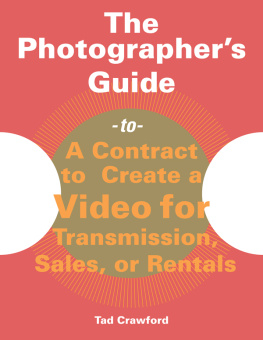


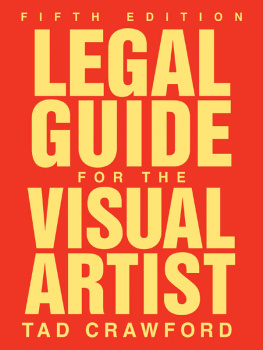

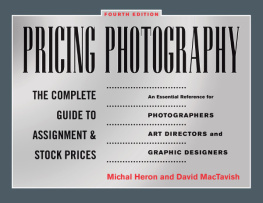
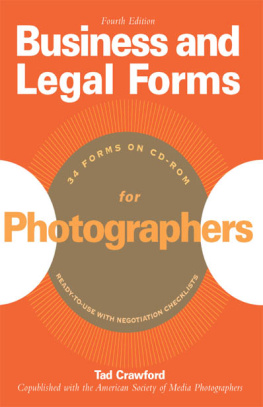

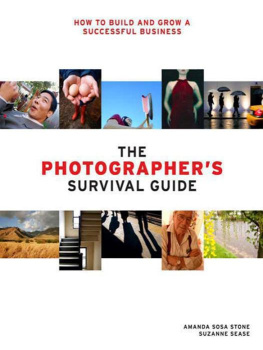


 Specify the facilities to be provided by the distributor, including details as to time of use, equipment, space, and staffing. (Paragraph 1)
Specify the facilities to be provided by the distributor, including details as to time of use, equipment, space, and staffing. (Paragraph 1)